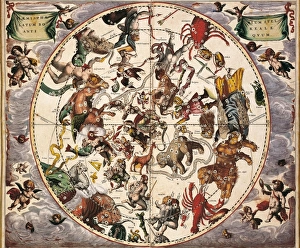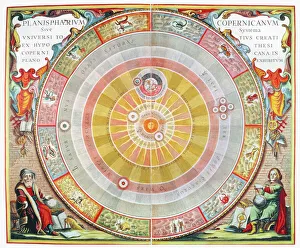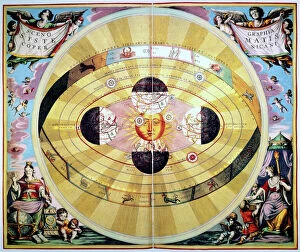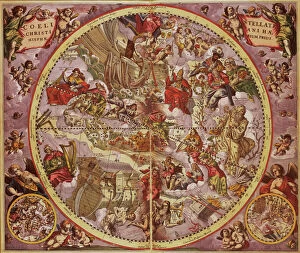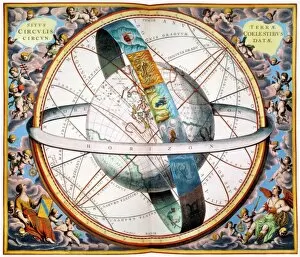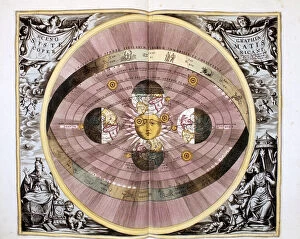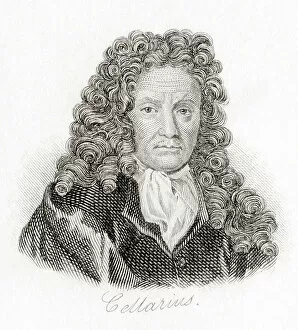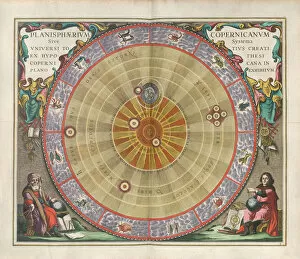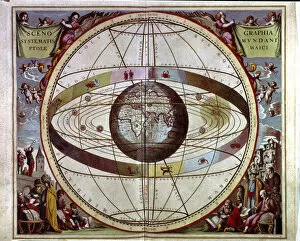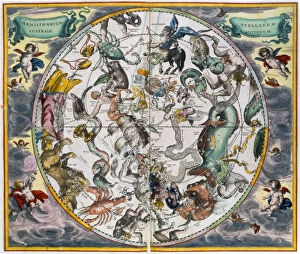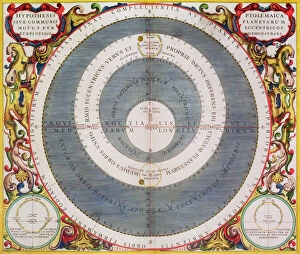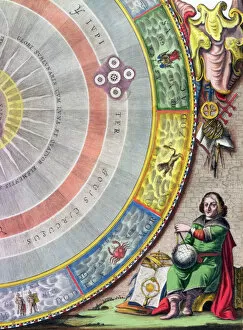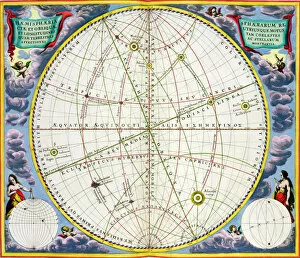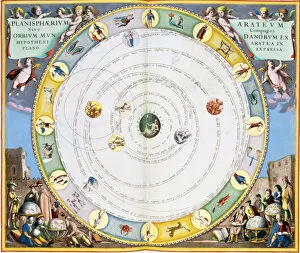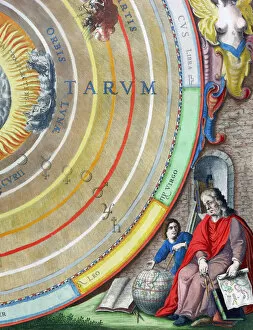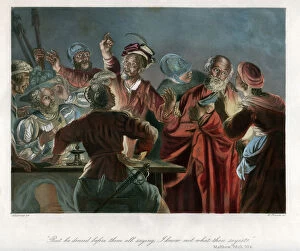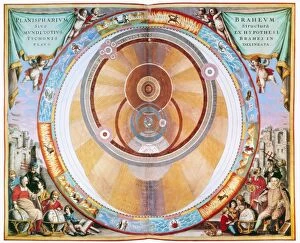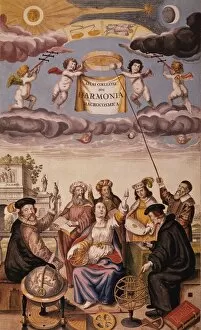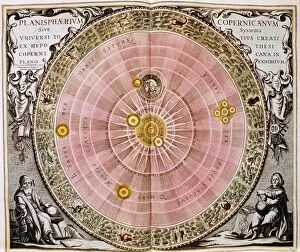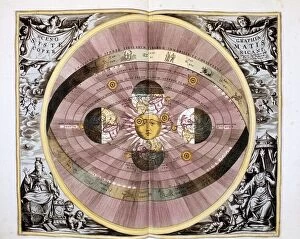Cellarius Collection
"Cellarius: Mapping the Celestial Universe" Step into the world of Andreas Cellarius
All Professionally Made to Order for Quick Shipping
"Cellarius: Mapping the Celestial Universe" Step into the world of Andreas Cellarius, a renowned Dutch-German cartographer whose work revolutionized our understanding of the cosmos. His masterpiece, Atlas Coelestis seu Harmonia Macrocosmica, published in 1660 Amsterdam, takes us on a mesmerizing journey through the heavens. In Cellarius' celestial atlas, we encounter a Copernican universe where the sun takes center stage. With meticulous detail and artistry, he depicts Copernicus himself at lower right and Ptolemy at lower left, symbolizing the clash between heliocentrism and geocentrism. The copperplate engravings from this opus showcase not only scientific knowledge but also artistic brilliance. The intricate lines bring to life Schillers Christianized Heaven in its southern hemisphere—a vision that merges faith with astronomy. Venturing further into Cellarius' works, we explore his representation of both the Ptolemaic universe and Copernican system. These contrasting models reveal how science evolves over time as new discoveries challenge prevailing beliefs. But it is not just Andreas who contributed to this legacy; his son Christoph Keller Cellarius continued their cartographic tradition. Together they crafted Hemisphaerium stellatum boreale antiquum—an enchanting depiction of the Northern Hemisphere—printed by Johannes Janssonius in Amsterdam during the Early Modern Era. Even centuries later, Cellarius' influence endures. In 1708, another rendition emerged showcasing a Sun-centered model inspired by Copernicus—a testament to how his ideas shaped future generations' understanding of our place in the cosmos. As we marvel at these timeless engravings created by unknown artists in 1830 based on Cellarius' original works, let us appreciate how one man's dedication to mapping celestial wonders forever changed our perception of space and ignited scientific progress for generations to come.

